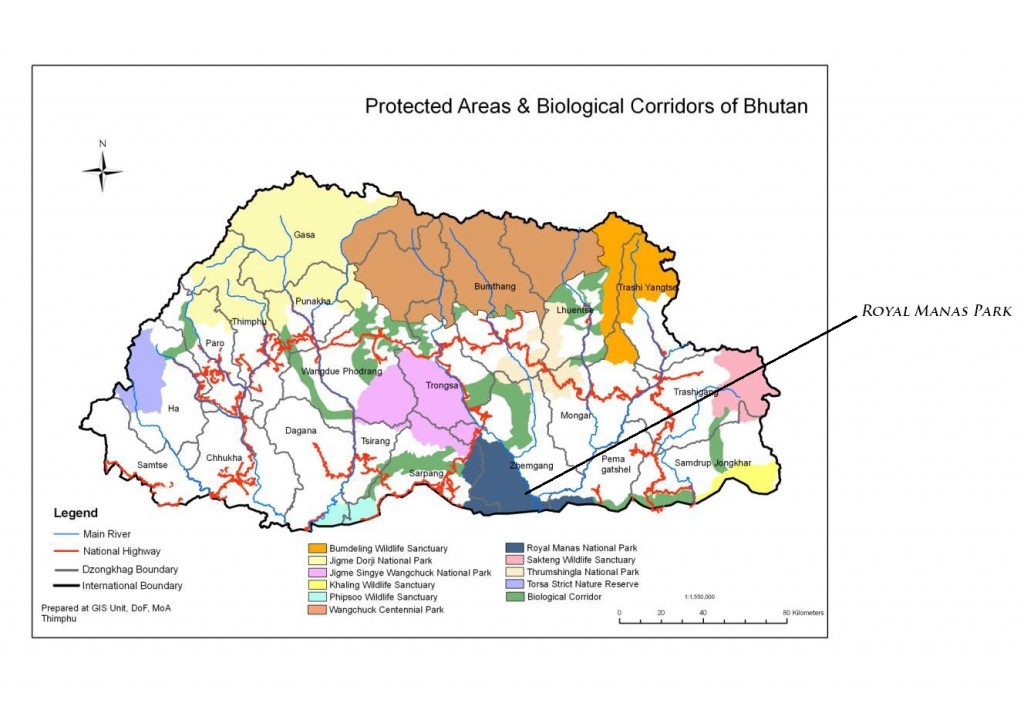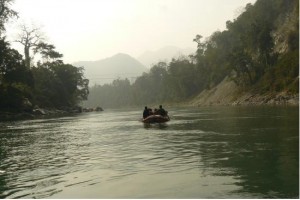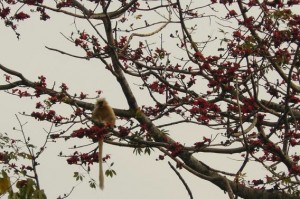
The Royal Manas National Park in Bhutan had remained closed to the public for years and so people knew very little about it then. Now, after it’s been open to visitors recently, visitors are finding out the park is indeed a crown jewel for the Himalayan nation given its rich tropical and sub-tropical ecosystems.
Home to thousands of animals, most of which are globally endangered, the Royal Manas National Park falls in the list of the world’s biologically outstanding parks. Located in south-central Bhutan, the park is connected with India’s Manas Tiger Reserve – a UNESCO World heritage site.
Apart from being the oldest national park in Bhutan (it was designated a wildlife sanctuary in 1966), Manas is also the conservative showpiece of the kingdom and a genetic depository for valuable plants.
Stretching over an area of 1,057 square kilometers, Manas is home to the Royal Bengal tiger, the Asian elephant, the greater one-horned rhinocerous, the clouded leopard, the pigmy hog, the Himalayan black bear and the nowhere else found golden langur to name a few. The Gangetic dolphin and the pangolin also call the park home.

The river that runs through the park along with its tributaries host three species of rare migratory fish called mahseer – the deep-bodied mahseer (Tor Tor), the golden masher (Tor Putitora) and the chocolate mahseer or katle (Acrossocheilus hexangonolepis).

The official numbers of birds species spotted in the park exceed 426. And the globally endangered bird species found in Manas include the threatened rufous-necked hornbill, pallas fishing eagle, white-bellied heron, spotted wren-babbler, blue-headed rock thrust and emerald cuckoo.
The best time to visit the park is from November to March when the monsoons are over. On safaris, visitors can also meet and interact with the locals who live in isolated clusters within the park. There are over 5,000 people who live within the boundaries there and human wildlife conflict is a part of their every day lives.
In Bhutan, the Royal Manas National Park is the fourth largest of its kind and stretches over Bhutan’s three districts of Zhemgang, Sarpang and Pemagatshel.

With 92% of the park still forested, Manas represents one of the best examples of an intact Eastern Himalayan ecosystem. And, to keep it that way, the Bhutanese government together with WWF has come up with effective conservation plans and supports patrols along the border with India to combat poaching, illegal hunting and logging by poachers who crossover to the Bhutanese side.
A spectacular national heritage of Bhutan – Manas is the most important among the protected areas in the kingdom. In fact, it is the first formally declared protected area by the government with a scientifically based management plan. It was declared a wildlife sanctuary in 1996 and upgraded to a national park in 1993. Only a few years ago was it opened to the public.
Lying in the Southern belt of Bhutan, with the Black Mountain National Park to its North and Indian Manas Tiger Reserve to its South. The park is also connected by biological corridors to Thrumshingla National Park in the North, Phibsoo Wildlife Sanctuary in the West, and Khaling Wildlife Sanctuary in the East.
Thus, it forms a very important part of the Bhutan Biological Conservation Complex (B2C2) landscape. It covers a vast diversity of tropical grasslands, temperate moist forests, alpine meadows, and scrublands.
Today, the park is a dream location for visitors both international and local to come up close and personal with animals that are on the verge of extinction. Luckily, with the Bhutanese government doing all it can to protect these beautiful creatures, their numbers may soon begin to thrive once again.

